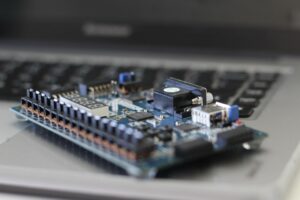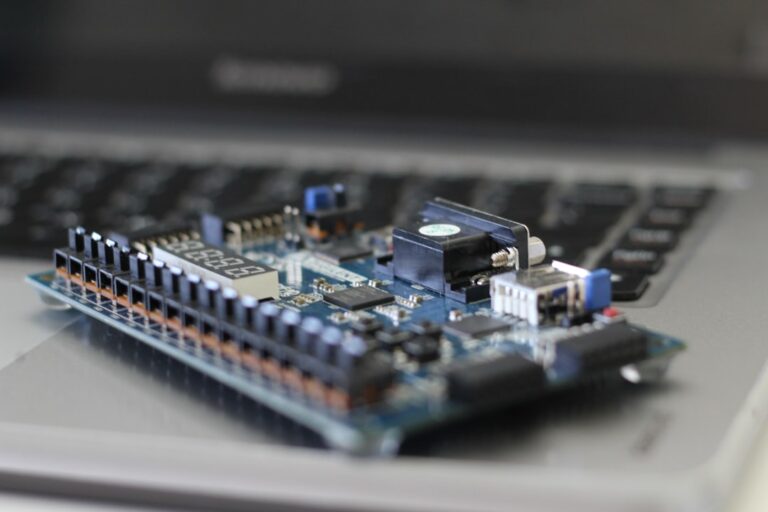In-memory computing is a paradigm that leverages the speed and efficiency of RAM (Random Access Memory) to process data, as opposed to traditional methods that rely on disk storage. This approach allows for the storage of data in a format that can be accessed and manipulated at lightning speed, significantly reducing latency and enhancing performance. The core principle behind in-memory computing is the ability to keep data in the main memory of a computer, which is inherently faster than reading from disk-based storage systems.
This shift from disk to memory has been made possible by advancements in hardware technology, including the decreasing cost of RAM and the increasing capacity of memory modules. The architecture of in-memory computing systems typically involves a distributed framework where data is stored across multiple nodes in a cluster. This not only enhances speed but also provides scalability, allowing organizations to handle vast amounts of data efficiently.
In-memory databases, such as SAP HANA and Apache Ignite, exemplify this technology by enabling real-time analytics and transactional processing. By eliminating the bottlenecks associated with disk I/O operations, in-memory computing empowers businesses to derive insights from their data almost instantaneously, facilitating timely decision-making and operational agility.
Key Takeaways
- In-Memory Computing utilizes main memory for data storage and processing, enabling faster data access and analysis compared to traditional disk-based systems.
- Advantages of In-Memory Computing include improved performance, real-time analytics, reduced latency, and enhanced scalability for handling large datasets.
- Use cases for In-Memory Computing range from real-time business intelligence and analytics to high-frequency trading and customer relationship management.
- Implementing In-Memory Computing involves selecting the right hardware and software, optimizing data storage and retrieval, and integrating with existing systems.
- In-Memory Computing offers significant performance improvements over traditional disk-based systems, but also requires careful consideration of cost, data persistence, and data management.
Advantages of In-Memory Computing
One of the most significant advantages of in-memory computing is its unparalleled speed.
In contrast, in-memory systems can access data in microseconds, enabling real-time analytics and immediate responses to queries.
This speed is particularly beneficial for applications that require rapid data processing, such as financial trading platforms or real-time customer analytics. The ability to perform complex calculations and aggregations on large datasets without delay can provide organizations with a competitive edge. Another key advantage is the enhanced performance for analytical workloads.
In-memory computing allows for advanced analytics, including predictive modeling and machine learning, to be performed directly on live data. This capability enables organizations to uncover trends and patterns that would be difficult to detect using traditional methods. Furthermore, the architecture of in-memory systems often supports parallel processing, allowing multiple operations to occur simultaneously.
This not only improves throughput but also optimizes resource utilization, making it possible for businesses to handle larger datasets without a corresponding increase in infrastructure costs.
Use Cases for In-Memory Computing

In-memory computing has found applications across various industries, each leveraging its capabilities to address specific challenges. In the financial sector, for instance, firms utilize in-memory databases for high-frequency trading where milliseconds can mean the difference between profit and loss. By processing vast amounts of market data in real-time, traders can make informed decisions based on the latest information available.
Additionally, risk management applications benefit from in-memory computing by allowing firms to run complex simulations and stress tests on their portfolios quickly. Retailers also harness the power of in-memory computing to enhance customer experiences. By analyzing customer behavior and preferences in real-time, businesses can tailor promotions and recommendations dynamically. For example, e-commerce platforms can adjust pricing or suggest products based on current trends and inventory levels, leading to increased sales and customer satisfaction. Moreover, supply chain management systems utilize in-memory computing to optimize inventory levels and logistics operations by analyzing data from various sources instantaneously, ensuring that products are available when and where they are needed.
Implementing In-Memory Computing
| Metrics | Value |
|---|---|
| Performance Improvement | 5x faster processing |
| Memory Utilization | Reduced by 50% |
| Response Time | Reduced by 70% |
| Cost Savings | 20% reduction in infrastructure costs |
Implementing an in-memory computing solution requires careful planning and consideration of several factors. First and foremost, organizations must assess their existing infrastructure to determine compatibility with in-memory technologies. This may involve upgrading hardware components such as RAM or investing in new servers designed for high-performance computing.
Additionally, organizations should evaluate their data architecture to ensure that it can support the transition from traditional disk-based systems to an in-memory model.
Organizations must develop a strategy for transferring existing datasets into the new in-memory environment without disrupting ongoing operations.
This process may involve data cleansing and transformation to ensure that the data is optimized for performance in an in-memory context. Furthermore, training staff on the new system is essential; employees must understand how to leverage the capabilities of in-memory computing effectively. This includes not only technical training but also fostering a culture that embraces data-driven decision-making.
When comparing in-memory computing with traditional disk-based systems, the differences become starkly apparent. Disk-based systems rely on mechanical drives or solid-state drives (SSDs) for data storage, which inherently introduces latency due to the time required for read/write operations. In contrast, in-memory systems store data directly in RAM, allowing for instantaneous access and manipulation.
This fundamental difference results in significantly faster query response times and improved overall system performance. Moreover, traditional systems often struggle with scalability when faced with increasing data volumes. As organizations grow and accumulate more data, disk-based systems can become bottlenecks due to their reliance on physical storage limits and I/O constraints.
In-memory computing architectures are designed to scale horizontally by adding more nodes to a cluster, thereby distributing the workload and enhancing performance without compromising speed. This scalability is crucial for modern enterprises that need to adapt quickly to changing market conditions and customer demands.
Overcoming Challenges in In-Memory Computing
Despite its numerous advantages, in-memory computing does present certain challenges that organizations must navigate. One of the primary concerns is cost; while RAM prices have decreased over time, maintaining large volumes of memory can still be expensive compared to traditional disk storage solutions. Organizations must carefully evaluate their return on investment (ROI) when considering an in-memory approach, ensuring that the performance gains justify the associated costs.
Data persistence is another challenge associated with in-memory computing. Since data stored in RAM is volatile, there is a risk of loss during power outages or system failures. To mitigate this risk, organizations often implement strategies such as periodic snapshots or hybrid models that combine in-memory processing with disk-based storage for backup purposes.
Additionally, ensuring data security within an in-memory environment is paramount; organizations must adopt robust security measures to protect sensitive information from unauthorized access or breaches.
Future Trends in In-Memory Computing

The future of in-memory computing appears promising as technological advancements continue to evolve the landscape. One notable trend is the integration of artificial intelligence (AI) and machine learning (ML) capabilities within in-memory systems. As organizations increasingly rely on AI-driven insights for decision-making, embedding these technologies into in-memory architectures will enable real-time analytics at unprecedented speeds.
This integration will facilitate more sophisticated predictive analytics and automation across various business processes. Another emerging trend is the rise of cloud-based in-memory computing solutions. As businesses migrate their operations to the cloud, leveraging cloud-native architectures allows for greater flexibility and scalability without the need for significant upfront investments in hardware.
Cloud providers are increasingly offering managed in-memory databases that simplify deployment and maintenance while providing organizations with access to cutting-edge technologies without the burden of managing physical infrastructure.
Harnessing the Potential of In-Memory Computing
In-memory computing represents a transformative shift in how organizations process and analyze data. By capitalizing on the speed and efficiency of RAM, businesses can unlock new levels of performance that were previously unattainable with traditional disk-based systems. The advantages of real-time analytics, enhanced decision-making capabilities, and improved operational efficiency position in-memory computing as a critical component of modern enterprise architecture.
As organizations continue to explore innovative ways to leverage their data assets, embracing in-memory computing will be essential for staying competitive in an increasingly data-driven world. By understanding its benefits, addressing implementation challenges, and keeping abreast of future trends, businesses can harness the full potential of this powerful technology to drive growth and success in their respective industries.
In-memory computing is a transformative technology that significantly enhances data processing speeds by storing data in the main memory rather than on traditional disk storage. This approach is particularly beneficial in fields that require rapid data access and real-time analytics. For those interested in exploring how in-memory computing can intersect with various industries, the article on the economic importance and applications of microbes in various industries provides valuable insights. It highlights how advanced computing technologies, including in-memory solutions, can optimize processes and drive innovation across different sectors.





















+ There are no comments
Add yours